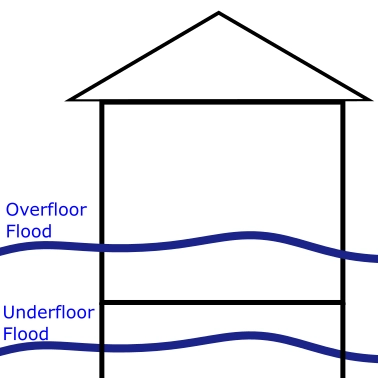1.Types of Flood
The torrential rain cause two types of flood, each of them has different properties.

- Flood from river
Flooding occurs when a river overflows or bursts its banks, causing river water to rush into residential areas. Because of the direct overflow from the river, the water is vital near the point of the breach and has the power to destroy dwellings and other buildings. Muddy water flowing out of the river will flow into homes, and even if the buildings escape destruction, flooding will cause enough damage to make it difficult to resume life.
- Flood from inland water
Stormwater accumulates in sewers and other drainage pipes, causing them to overflow. It does not have the power to destroy a house like an outdoor flood, but it does cause sewage to flow into the home, and if flooded, it leaves behind stains and odors that require restoration work.

